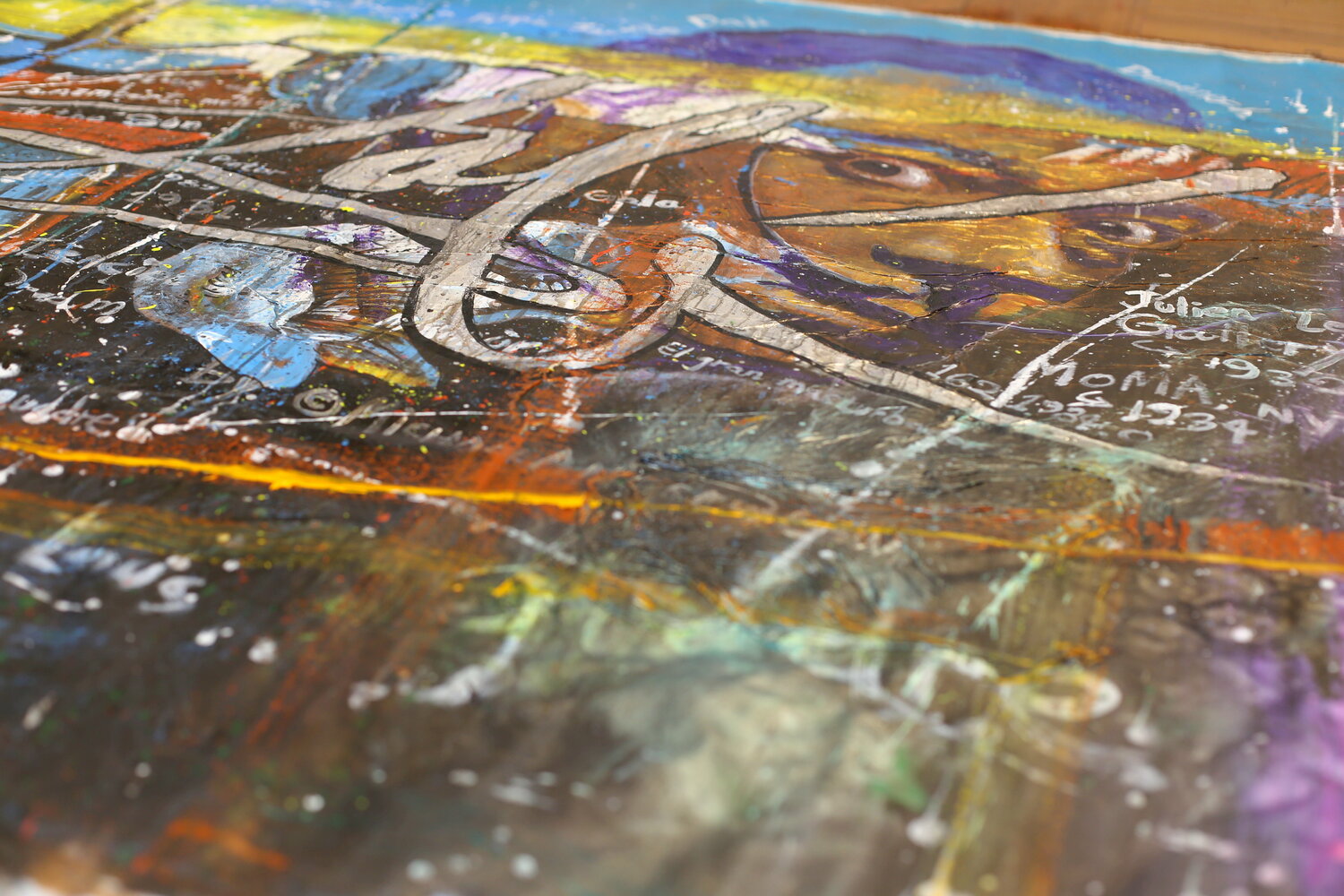If Julian Schnabel Goes Pop”: Michael Andrew Law’s Intertextual Dialogue with Art History
In the history of art, the interplay between tradition and innovation has often produced some of the most compelling works. Contemporary artist Michael Andrew Law’s most recent series, “If Julian Schnabel Goes Pop,” offers a fascinating case study in this regard, as it simultaneously pays homage to canonical masterpieces and pushes the boundaries of artistic creation.





































Law’s series is a collection of mixed media works on large linen canvases, a medium that allows for a broad range of textural and visual effects. Law’s choice of materials – oil, acrylic, glitter powder, and judiciously applied diamond dust – harks back to the tradition of mixing pigment powder with linseed oil, a classical medium. This intermingling of traditional and contemporary materials serves as a metaphor for the series as a whole, which dialogues with the past while forging its unique path.
The works in this series engage with a wide array of iconic paintings, each reinterpreted through Law’s distinctive lens. Canonical works such as da Vinci’s “Mona Lisa,” Picasso’s “Les Demoiselles d’Avignon,” Warhol’s “Monroe,” and Manet’s “Luncheon on the Grass” are brought into conversation with the present through Law’s vibrant reinterpretation.
Law’s reimagining extends to an even broader array of masterpieces, including Édouard Manet’s “Olympia,” Johannes Vermeer’s “Girl with a Pearl Earring,” Helmut Newton’s 1980’s “The Big Nude,” Rembrandt’s “Self-Portrait with Two Circles,” Gerhard Richter’s “Tante Marianne,” and Jean-Michel Basquiat’s “Dos Cabezas.” Each work is not merely a reproduction; rather, it is a reinterpretation that invites the viewer to engage with these familiar images in new and unexpected ways.
The intertextuality of Law’s series goes beyond visual representation and delves into the realm of textual narration. Each piece is overlaid with colorful text, providing historical context for the depicted images. This stylistic choice, influenced by artists like Cy Twombly, Anselm Kiefer, Francis Picabia, and Julian Schnabel, adds narrative depth to the visual complexity of the works.
The title of the series, “If Julian Schnabel Goes Pop,” is a tribute to Schnabel, whose innovative approach to art has greatly inspired Law’s oeuvre. It invites the viewer to imagine a hypothetical scenario in which Schnabel, renowned for his “plate paintings,” ventures into Pop Art. The result is a series that straddles the line between respect for tradition and the daring pursuit of innovation.
In sum, “If Julian Schnabel Goes Pop” is a testament to the enduring dialogue between past and present in art. It is a tribute to the richness of art history, a reimagining of some of its most iconic works, and a bold statement of Law’s own artistic vision. The series illuminates the transformative power of art, demonstrating how an artist can draw on the past to create something entirely new and compelling.